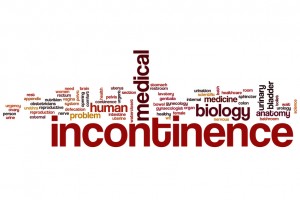Frequent trips to the bathroom can be embarrassing, inconvenient and stressful. The National Association for Continence reports that one in 12 Americans endure some form of bladder or bowel control problem; of these, between 75 and 80 percent are women.
Often referred to as urinary leakage or overactive bladder, incontinence strikes women more than twice as often as men, due to the physical stress brought on by childbirth and pregnancy. Smoking, menopause and the structure of the female urinary tract are also factors. Women usually suffer from one of two types of incontinence: stress incontinence or urge incontinence.
Stress Incontinence
Stress incontinence results when the pelvic muscles cannot hold the bladder in place. As a result, the bladder drops into a position that prevents the urethra from closing properly. Actions such as exercising, coughing, sneezing, laughing or jogging put added pressure on the bladder and result in urinary leakage; the leakage can be a drop, a squirt or a stream. Once the activity ends, so does the leakage. Causes for damaged or stretched pelvic muscles include weight gain, childbirth, repetitive heavy lifting and chronic constipation.
Urge Incontinence
Urge incontinence involves either a hyperactive or inactive bladder. The bladder has two functions: to hold the urine excreted by the kidneys and to push the urine into the urethra for removal from the body. A sudden, overwhelming urge to urinate, the need to urinate more than eight times a day or the need to urinate several times a night (nocturia), indicate an overactive bladder muscle. Leakage occurs due to the inability to control the urge. Causes for an overactive bladder muscle include infection, hysterectomy, medication, anxiety and genetics.
Conversely, with urinary retention, the bladder muscle is inactive, and the bladder does not fully drain; immediately after going there is an urge to go again. Leakage may occur because the bladder is constantly full. Leakage resulting from an inactive bladder muscle is sometimes referred to as overflow incontinence. Causes for urinary retention include a blockage and nerve damage due to stroke, multiple sclerosis, diabetes, childbirth and other conditions.
Diagnosis
Less than 50 percent of women afflicted with incontinence tell their doctor because of fear, embarrassment or the mistaken assumption that it is simply a part of the aging process. Raising the issue is the first step in diagnosis and treatment.
Following a detailed history and a thorough physical exam, your physician may suggest one of several tests to measure the amount of urine remaining in the bladder after urination. Tests to check for obstruction, structural abnormalities and inflammation may also be performed. An EMG may be conducted to evaluate nerve function and the ability to control the pelvic muscles.
Treatment
Treatment depends on the type of incontinence diagnosed. Behavior modification options include pelvic exercises, stress reduction, weight loss, smoking cessation and bladder training. Other options include medication, a support device such as a pessary, nerve stimulation and absorbent undergarments or products such as Depends. Surgical options are usually the last resort.
Incontinence is not just a symptom of getting older, and it certainly is not something women have to resign themselves to enduring. Seeking treatment is the first step to finding an answer and regaining control of a quality lifestyle.
